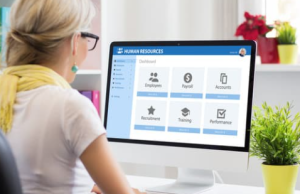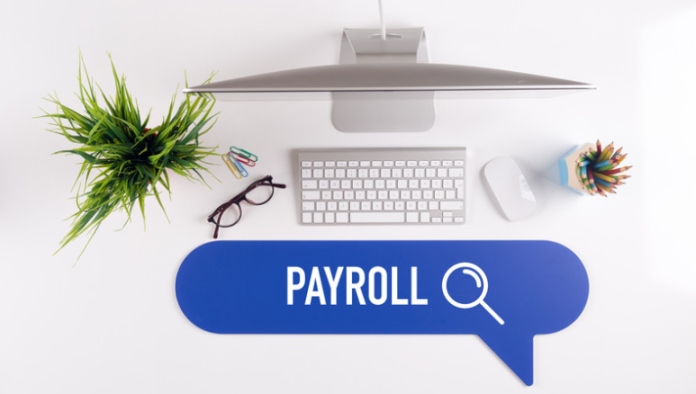Table of Contents
The future is digital, and it’s time for your payroll functions to keep up. The benefits of digitalising your payroll are endless. From reducing manual processes to increasing accuracy and transparency, digital payroll systems can save time while providing greater visibility and control over your payroll data.
But how do you know which software to choose? How do you ensure compliance with the ever-changing regulations? And what about employee satisfaction?
Here, we will dive deep into all these questions, and this page explains how payroll software can be integrated with other accounting or HR software applications with ways to streamline the process. We’ll also discuss the costs of managing your payroll and how to choose the right payroll software for your organisation. Lastly, we will look at the future of payroll management and what you can expect in 2023. Get ready to transform your payroll functions with our comprehensive guide!
Why digitalise your payroll?
 Digitalising your payroll system can greatly benefit your organisation in many ways. One of the most significant advantages is increased efficiency, as digital systems can automate processes and reduce manual errors. It also provides greater transparency and accuracy, making identifying and resolving potential issues easier.
Digitalising your payroll system can greatly benefit your organisation in many ways. One of the most significant advantages is increased efficiency, as digital systems can automate processes and reduce manual errors. It also provides greater transparency and accuracy, making identifying and resolving potential issues easier.
Furthermore, digital payroll systems can integrate with other HR software, allowing for streamlined employee data management and regulatory compliance. Digitalising your payroll functions will save you time, reduce errors, and provide greater control over your payroll processes.
Benefits of integrating payroll and other HR software
Improving payroll processes is vital for any organisation to run smoothly. Integrating payroll with HR software improves efficiency by streamlining processes and providing real-time access to data. Automation frees time for HR professionals to focus on strategic initiatives while improving data security through centralized systems with access controls.
Insights gleaned from integrated systems allow for better workforce trend prediction and future planning. This enhances customer experience and boosts employee satisfaction while reducing the workload on payroll professionals.
The impact of automation on payroll management
 Automation has revolutionized the way organizations manage their payroll system. With automation, payroll professionals can streamline processes, reduce human error, and increase efficiency. Integrating automated payroll systems with other software, such as accounting or HR, provides real-time access to payroll data while improving record-keeping and data security.
Automation has revolutionized the way organizations manage their payroll system. With automation, payroll professionals can streamline processes, reduce human error, and increase efficiency. Integrating automated payroll systems with other software, such as accounting or HR, provides real-time access to payroll data while improving record-keeping and data security.
Automation saves time and money by reducing manual labour costs associated with payroll processing. This digital transformation has created a new era in which customer experience is enhanced and administrative tasks are minimized.
Understanding the costs of managing payroll
Effective payroll management is vital for every organization, for which understanding the costs involved is necessary to gauge investment returns. Identifying factors such as software, payroll professionals’ availability & compliance with legislation are critical.
Adopting digitalization in the company’s pay period management process to reduce errors and lost productivity in manual data processing could bring significant savings, making it an attractive proposition. Thus evaluating long-term benefits and streamlining the process through automation would give a competitive edge to maintain customer experience while satisfying employees.
How to choose the right payroll software for your organisation?
Selecting the right payroll system is crucial for any organization. Before choosing an appropriate option, evaluating unique payroll needs is essential. Opting for payroll software that offers automation and HR function integration is essential.
Factors to consider when selecting a payroll software
Choosing the right payroll software is not a decision to be made lightly. Several factors must be considered, such as the size of your organization, the complexity of your payroll functions, and your budget. It would help if you also considered the level of customer support provided by the software vendor, ease of use, and data security features offered.
Additionally, it would be best to consider software that offers features such as tax compliance management, direct deposit capabilities, and mobile accessibility. A thorough evaluation of these factors will help you choose the most suitable payroll system for your organization’s needs. You must also ensure that your chosen software can be scaled according to your future requirements and adhere to GDPR or CCPA regulations.
Training your workforce on digital payroll systems
Introducing a digital payroll system can be a significant change for your workforce. Providing comprehensive training to employees is crucial to maximize the benefits of the new software. The training should cover all aspects of the new system, including data entry, processing, and reporting.
Educating employees on the advantages of digitalising payroll functions, such as increased accuracy and efficiency, is also essential. Providing ongoing support and monitoring employee performance after implementation will ensure your workforce is comfortable and confident using the new system. Investing in employee training and development will improve productivity through efficient payroll processes and employee satisfaction through streamlined payroll functions.
Streamlining payroll processes for accountants
 Digitalising your payroll functions in 2023 can help streamline payroll processes for accountants. With the right software, accountants can automate data entry, processing, and reporting tasks. This frees their time to focus on more complex financial tasks requiring expertise. Choosing a payroll system that integrates easily with your accounting software is essential to ensure smooth and accurate financial reporting.
Digitalising your payroll functions in 2023 can help streamline payroll processes for accountants. With the right software, accountants can automate data entry, processing, and reporting tasks. This frees their time to focus on more complex financial tasks requiring expertise. Choosing a payroll system that integrates easily with your accounting software is essential to ensure smooth and accurate financial reporting.
Additionally, digitalising payroll functions will enable easy tracking of employee records, tax compliance management, and direct deposit capabilities. Overall, introducing a digital payroll system will improve efficiency and accuracy for accountants while reducing costs associated with manual payroll processes.
The future of payroll management – What to expect in 2023?
The future of payroll management is set to transform significantly by 2023 as employers continue to embrace digital transformation. Artificial intelligence and automation are expected to play a significant role in streamlining payroll processes, while blockchain technology will improve the security of personal data within the payroll system. With cloud-based payroll software, it would be possible for real-time access to payroll data from any device with an internet connection.
Additionally, employee self-service portals are becoming more popular, improving the overall digital experience for employees. Integrating payroll systems with other HR functions, such as recruitment, training, and performance management, makes it easier for human resources departments to manage all aspects of the employee experience in one place.
Conclusion
In conclusion, digitalising your payroll functions is how businesses want to stay competitive and efficient. The benefits of integrating payroll and HR software are immense, and automation can dramatically reduce the time and effort spent on manual tasks. However, choosing the right software for your organisation and training your workforce is essential.
Compliance with digital payroll systems is crucial, as is ensuring employee satisfaction through digital payslips. Looking ahead to 2023, we can expect even more advancements in payroll technology that will continue to streamline processes and enhance accuracy. Stay ahead of the curve by embracing digital payroll management today.


